Weather conditions and outdoor elements can sometimes prove challenging for construction workers. It's during these exacting times that protective gear becomes of utmost importance. Among the standard safety equipment, rain gear often commands a high level of significance, providing cover against adverse weather while enabling tasks to continue unabated.
Navigating through rain-soaked construction sites is not just about staying dry; it's also about comfort, durability, and safety. It's about sporting a gear that doesn't restrict movement, endures rugged use, and complies with safety standards. Choosing the right rain gear is, therefore, an integral part of a construction worker's job.
In this informative piece, we will go depth about the importance of comfortable and durable rain gear for construction workers. We will detail essential features to consider when purchasing rain gear, shed light on different types and their appropriate applications, and guide you on care and maintenance practices for long-term usability. So, let's dive in to understand better why rain gear is an essential part of any construction labourer's toolkit.
Importance of Comfortable and Durable Rain Gear for Construction Workers
In the construction industry, workers often encounter diverse weather conditions, ranging from scorching sun to heavy downpour. During these adverse weather periods, especially rain, working without suitable protection can be an uphill task. This is where the need for comfortable and durable rain gear comes into play. Designed to withstand rigorous conditions, such gear isn't a luxury but a necessity, ensuring workers stay both dry and efficient on the job. Therefore, let's explore the importance of such equipment, focusing on the essential aspects of durability and comfort.
Durability: A Non-negotiable Quality
Rain gear that lacks durability is akin to bringing a knife to a gunfight. After all, what good is a raincoat if it can't stand up to the pouring rain, or a pair of boots if they leak water? For construction workers, durable rain gear is indispensable.
- Resistance to Weather Conditions: Highly durable rain gear is designed to be completely waterproof, standing up to the severest of storms. It offers reliable protection, preventing workers from getting soaked and allowing them to focus on the task at hand.
- Long-lasting Investment: Durable equipment translates to less frequent replacements. This, in turn, means saving resources in the long-term, making it a wise investment.
- Safety first: Durable rain gear often includes features such as water and oil resistance, ensuring a safer work environment.
Therefore, durability is a quality that elevates the importance of construction-friendly rain gear, acting as a bulwark against adverse weather conditions.
Comfort: Ensuring Efficiency Amidst Adverse Weather
Alongside durability, comfort is equally crucial when selecting rain gear for construction workers. What benefit is a durable raincoat that's too stiff to move in, or waterproof boots that cause blisters? Ergo, to maintain productivity, comfort should not be compromised.
- Flexible Movement: Adequate comfort enhances the range of movement, allowing workers to perform without restrictiveness.
- Morale boost: Working in extreme weather conditions can be a daunting task. Comfortable gear makes it a tad easier, boosting worker morale and keeping spirits high.
- Health Benefit: Using comfortable rain gear reduces risks of health issues, such as skin chafing or rashes, providing a healthier work environment.
In a word, comfort in rain gear ensures that durability doesn't cost efficiency, adding to the list of why such gear is indispensable for construction workers.
Marrying Comfort and Durability: The Ideal Rain Gear
The ideal rain gear for construction workers should embody both comfort and durability, striking a balance that delivers maximum benefits. The quality, material, fit, and design should all come together to offer rain gear that not just shields against the rain but also aids in efficient working.
To illustrate, a rain gear made of durable PVC that is also lightweight provides a combination of sturdiness and comfort. Equally, rain gear designed with reflective qualities adds an extra safety layer, without sacrificing comfort or durability.
So, let's not underestimate the importance of comfortable and durable rain gear for construction workers. As they brave the elements to build our infrastructure, it's only right that their gear should be built to last, ensuring they remain safe, efficient, and comfortable, come rain or shine.
Key Features to Look for in Quality Rain Gear
Living in an area with constant rainfall requires the right gear to keep you dry and comfortable. Shopping for rain gear can be daunting; there are unlimited options with different materials, designs, and features. How can you separate quality rain gear pieces from the ones that will leave you soaked through? In this article, we delve into the key features you should look out for when shopping for premium rain gear.
Materials and Fabric Quality
When choosing rain gear, the first thing to consider is the fabric quality. The choice of material can significantly impact the gear's comfort and effectiveness. Quality rain gear should be made from durable materials that can withstand the elements while keeping you dry. Some top-tier materials to consider include:
- Gore-Tex: This is a lightweight, waterproof material that also offers breathability.
- Nylon: Nylon is not only water-resistant but also very sturdy, standing up to regular wear and tear.
- Polyester: Polyester rain gear is generally cheaper and offers good water resistance.
Safety Standards Compliance
Compliance with safety standards is another essential feature often overlooked. From ensuring high visibility in low light scenarios to reflective elements for evening strolls, quality rain gear should comply with safety standards set by reputable industrial bodies.
Waterproofing and Breathability
It would be best if you insisted on rain gear that is not only waterproof but also breathable. Quality rain gear should have a high waterproof rating, ensuring no water seeps in. On the other hand, breathability is essential to let moisture from your body out, preventing you from feeling damp and sweaty.
Design and Fitting
Good rain gear should fit comfortably. Oversized gear might be loose and let water sneak in, while too tight gear can restrict your movement. Additionally, consider design features like adjustable hoods, waistbands, cuffs, and sturdy zippers that make the gear more effective and easy to use.
Layering Capability and Insulation
The best rain gear should offer room for layering, especially for cold seasons. It should expediently accommodate additional clothing underneath without compromising comfort or movement. Quality rain gear often includes insulation properties, ensuring you stay warm during cold, wet weather scenarios.
Selecting quality rain gear involves more than just choosing the right size. By taking into account material quality, safety standards, waterproofing, breathability, design, fit, layering, and insulation, you can comfortably shield yourself from the elements and enjoy your outdoor activities, come rain or shine.
Rain Gear Type and its Applications
Regardless of whether you're gearing up for a camping trip, facing adverse weather on a construction site, or simply trekking across town during the rainy season, choosing the right rain gear is integral. We’ve composed a comprehensive guide to help you understand the various types of rain gear and their specific applications, ensuring that you're well-prepared for any wet weather scenario.
Rain Jacket and Coats
First off, let's delve into rain jackets and coats. They remain the go-to outerwear for most individuals during the rainy season due to their practicality and wide array of styles. As the name suggests, rain jackets are specifically designed to keep your upper body dry, with features such as:
- Water-resistant materials, typically synthetic fabrics like nylon or polyester.
- Special coatings or laminates that repel water.
- Taped or sealed seams to prevent water from seeping in.
However, they should not be confused with regular jackets. Rain jackets have a water-repellent coating, and some high-end models are made of breathable fabric, which allows sweat vapor to escape while still preventing rainwater from penetrating.
Rain Pants
Rain pants help to complement your rain jacket by delivering similar features for your lower body. They are a critical component in any full outdoor rain gear kit. Some specific elements to look for to ensure maximum protection include:
- Highly resistant materials for durability.
- Adjustable waist bands and hems to create the best fit.
- Lightweight so as not to restrict movement.
Just as rain jackets, rain pants also come in various styles, colors, and sizes, ensuring that there's something suitable for everyone.
Full Body Rain Suits
For those faced with extreme weather conditions or heavy rain, a full-body rain suit might be the best option. This one-piece gear creates a waterproof shield from head to toe. These suits typically come with:
- Attached hood to protect the head.
- Zipped front for easy wearing and removal.
- Elasticated cuffs and adjustable ankles for a secure fit.
True to their very name, rain suits provide all-round protection, leaving very few chinks in your armor against the rain.
Boots and Overshoes
The right kind of footwear is just as important during the rains. Waterproof boots and overshoes are a great fusion of functionality and fashion, keeping your feet warm and dry while enhancing your outfit. Here are some distinct features:
- High, over-the-ankle design to prevent water entry.
- Slip-resistant soles to provide grip on wet surfaces.
- Warm linings for those colder, rainy days.
Hard Hat Rain Covers
If your work or outdoor adventure requires you to wear a hard hat, you’ll appreciate hard hat rain covers. Their key purpose is to keep the rain off your hard hat and prevent water from dripping down your neck, effectively enhancing your comfort and concentration. Most of these covers feature:
- Elasticated edges for a snug fit over the hat.
- Reflective strips for visibility.
- Lightweight and easily storable designs.
Remember, tackling rain and staying dry is no difficult task when armed with the right rain gear. Following this guide will ensure your pick caters to your unique needs without compromising on style or comfort.
Care and Maintenance of Rain Gear
Rain gear, including raincoats, ponchos, and waterproof boots, are essential items for weathering the storm, quite literally. But these storm-busting allies need special care to keep them performing at their best. Here's everything you must know about the care and maintenance of rain gear.
Cleaning and Drying
Regular cleaning is a key to extending the life of your rain gear. You see, the dirt particles can scratch the surface and degrade the waterproof coating over time. Stick to a mild detergent and cool water for the cleaning. Avoid fabric softeners and bleach as they can harm the waterproofing.
Proper drying is just as crucial. Straight out of the machine, hang your gear in a well-ventilated area, but not in direct sunlight. Structural integrity of rain gear can potentially be compromised if exposed excessively to heat.
Storage
When it comes to storing your rain gear, a few simple rules apply:
- Always ensure gear is properly dry before storage to prevent the growth of mildew.
- Fold it neatly, but not too tightly, and avoid stashing in damp or humid areas.
- A storage cube or breathable bag is an ideal place to keep your gear until the next rainstorm shows up.
Inspection and Repairs
Inspect your rain gear regularly. Check for rips or loose seams that might let water seep in. Rubber boots, in particular, are prone to developing cracks over time. Use a waterproofing spray or seam sealer for minor repairs.
"If you can't fix it yourself, don't hesitate to take your gear to a professional repair service," says a renowned expert in waterproof gear maintenance.
Replacement
Even with excellent care, no rain gear lasts forever. When to replace it often depends on its frequency of use and how well you maintain it. Some of the telltale signs of needing a replacement might include persistent leaks, delamination (a fancy term for when your gear's layers start to separate), and faded spots.
Knowing how to care and maintain your rain gear is, without a doubt, a skill worth mastering. Just like the seasons, rain gear eventual wear and tear is inevitable. But with these tips, you're well on your way to ensuring your gear keeps you dry for many seasons to come.
Conclusion
In the face of rigorous demands and dynamic weather conditions, construction workers deserve the best attire to stay safe and perform efficiently. Quality rain gear is critical, comprising not just durability and comfort, but also safety standards and design elements appropriate for various roles and conditions onsite. Remember that timely care and maintenance extend the life span of your rain gear, ensuring that it continues to serve you faithfully.
For the finest rain gear, consider trusted names like Hurricane Raingear. Their products, designed and assembled in the Pacific North West, embody patience, perfection, and performance. They bring together the qualities essential in rain gear – waterproof capabilities, breathability, high reflectivity, and rip-resistant tenacity – into simplistic designs that foster comfort and unrestricted movement. All things considered, the right rain gear can keep you comfy, secure, and efficient in the rain --- so choose wisely and invest in the best gear your livelihood deserves.
Frequently Asked Questions
-
What are the top rain gear options for construction labor?
The top rain gear options for construction labor include: 1. Waterproof jackets with taped seams, 2. Waterproof pants or bib overalls, 3. Heavy-duty rain boots, 4. Waterproof gloves, and 5. Rain hats or hoods.
-
How does waterproofing technology work in rain gear?
Waterproofing technology in rain gear typically involves a combination of materials, such as laminated membranes and durable water repellent (DWR) coatings. These materials prevent water from penetrating the fabric while allowing moisture vapor to escape, keeping you dry and comfortable.
-
Are there any specific features to consider when choosing rain gear for construction labor?
When choosing rain gear for construction labor, consider features like reinforced knees and elbows for added durability, adjustable cuffs and hems for a snug fit, multiple pockets for storing tools, reflective strips or high-visibility colors for safety, and removable or adjustable hoods for versatility.
-
How do I maintain and clean my rain gear?
To maintain and clean your rain gear, follow the manufacturer's instructions. In general, avoid using fabric softener and bleach, as they can reduce the waterproofing properties. Instead, use mild detergents and wash the rain gear in cold water. Hang or lay flat to dry, and periodically reapply DWR coating if necessary.
-
Can I use rain gear for other outdoor activities besides construction labor?
Yes, rain gear designed for construction labor can also be used for other outdoor activities such as hiking, camping, fishing, and gardening. The durability and waterproof features make them suitable for various purposes beyond construction work.



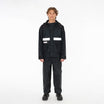



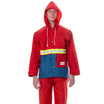


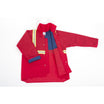

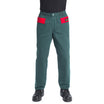



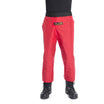






Leave a comment
This site is protected by hCaptcha and the hCaptcha Privacy Policy and Terms of Service apply.